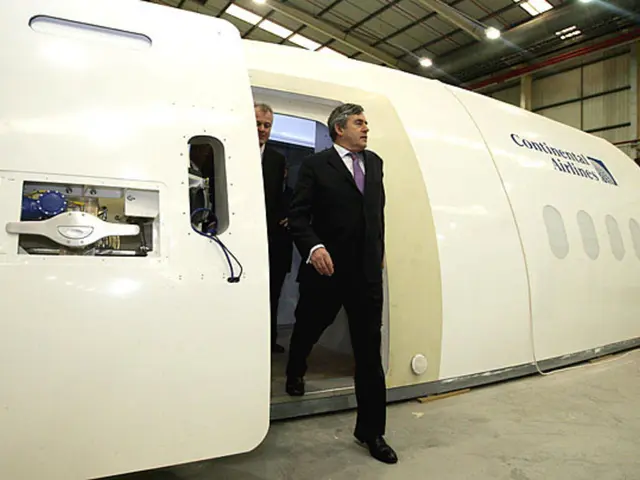Obstacles in Economy and Scalability for the Development of Robotics Technology
In the world of technology, the dream of mass-produced humanoid robots is becoming increasingly tangible. However, there are several economic hurdles that need to be overcome before these robots can become commonplace.
Currently, the annual production of humanoid robots hovers around the 1,000 unit mark. To achieve mass adoption, production must exceed 1 million units per year. This requires a shift from Ferrari economics to iPhone economics: standardized, automated, and scalable.
Luckily, learning curve effects and process optimization can help reduce costs as production increases. Volume scaling, a key concept in manufacturing, enables consistent quality through robotic assembly and eliminates inefficiencies. Standardized interfaces for components, or modular design, also contribute to this scalability.
However, the field must shift from artisanal production to industrialized scaling. This involves closing the 1000x scaling gap, which requires new approaches to automation, modularity, and design. Shared designs across platforms can lead to economies of scale from parts reuse.
Cost reduction at every stage is possible. Lights-out factories capable of 24/7 production can be implemented, and supplier partnerships can stabilize input availability. The cost must drop 10x, from $200,000 to $20,000 per unit, for humanoid robots to become affordable for the masses.
Several economic barriers keep costs high and volumes low. Market adoption issues, investment risk, supply chain challenges, and labor economics all play a role. Closing these gaps requires customer education, financing models, and use-case validation in logistics, manufacturing, and services.
Regulatory clarity is also crucial. Safety standards and certification processes, clear liability frameworks, and regulations that enable rather than stall deployment are required for the regulatory frameworks.
The path forward requires synchronized advances in automated manufacturing, modular design, market creation, and regulatory clarity. Companies like Figure AI, Xiaomi Robotics, Zhipu Robotics, Yuejiang Robotics, ABB, and Unitree Robotics are leading the charge, aiming to achieve at least one million units annually for economic viability in warehouses, factories, and households.
Despite the long development timeline under optimistic assumptions of 10-17 years, the challenge is not just building robots that work. It is building robots that scale. The future of humanoid robots lies in overcoming these economic barriers and achieving mass production.
Read also:
- Comprehensive Cancer Care Strategy Encompassed by Siemens Healthineers Entirely
- Federal solar energy initiatives among Wyoming's tribal communities face varying outcomes following the Trump Administration's withdrawal of funding.
- Exploring Hemp Insulation: Is This Eco-Conscious Solution Worthwhile for Your Construction Project?
- Construction fleet and urban transport emissions could see a significant reduction with the implementation of biogas as a game-changing solution.







